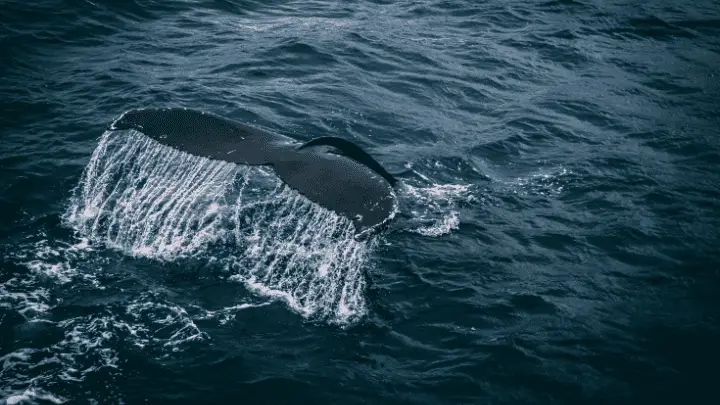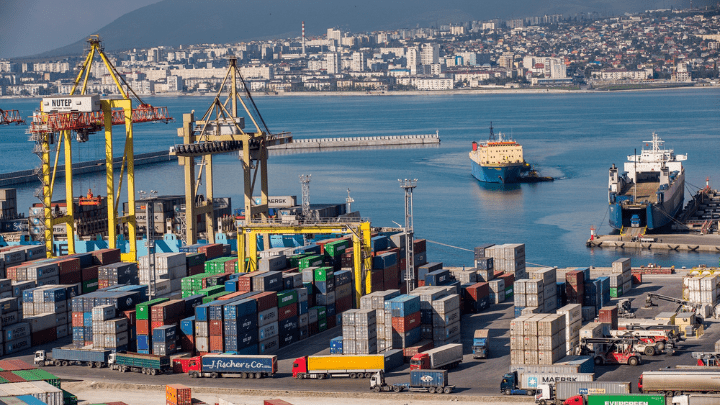Have you ever wondered about the differences between the Pacific Ocean and the Atlantic Ocean? Sure, I know one has ‘Pacific,’ and the other has ‘Atlantic’ in their name – but what else sets them apart? Does one have more wildlife? Is there a specific color and ocean current difference between them?
With this article, you will dive deeper into these two bodies of water and explore their subtle differences. In addition, I’ll compare and contrast the different types of creatures that inhabit them, the unique geographical and physical characteristics they share, and even discuss if they mix.
So come along with me as I dive into the depths and look at the wonderful differences between the Pacific and Atlantic oceans.
What Are the Differences Between the Atlantic Ocean and the Pacific Ocean?
1. Geographical and physical differences
The Pacific and Atlantic Oceans have vastly different geographical and physical features that make them unique. Below are some of them.
Size and Shape
The Pacific is larger than any of Earth’s other oceans. The Pacific is approximately 63.8 million mi² in size, while the Atlantic is approximately 41.1 million mi². Additionally, the Pacific has a longer, more elongated form that runs from north to south.
Depth and Topography
In general, the Pacific Ocean is deeper than the Atlantic Ocean. While the Atlantic has an average depth of about 10,955 feet, the Pacific has a depth of about 12,080 feet.
The Mariana Trench, the world’s deepest ocean region with a depth of about 35,827 feet, is also a feature of the Pacific. By comparison, the Puerto Rico Trench, which descends approximately 28,000 feet, is the deepest point in the Atlantic.
Location and Borders
The Pacific Ocean is bounded east by Asia and Australia and west by North and South America. The Atlantic Ocean is bounded west by Europe and Africa and east by North and South America. Using the Panama Canal, ships can move back and forth between the Pacific and Atlantic Oceans.
Ocean Currents
Both oceans have distinct ocean currents that influence their climates and weather patterns. In the Pacific, the North Equatorial Current moves warm water from the equator towards the west.
In contrast, the California Current moves cooler water southward along the western coast of North America.
In the Atlantic, the Gulf Stream moves warm water from the Gulf of Mexico towards Europe, while the Canary Current brings cooler water southward along the western coast of Africa.
Color
The Pacific and Atlantic oceans differ significantly in terms of color. Generally, the Pacific Ocean is characterized by blue-tinged hues, ranging from a deep sapphire to an azure shade. This coloration results from sunlight reflection and absorption, oceanographic features, and water chemistry.
In contrast, the Atlantic Ocean often appears as a full spectrum of colors, with shades of green and turquoise intermingled. The primary difference between these two oceans that causes this variation is the amount of sediment suspended and microscopic marine life in the water, such as algae and plankton.
The higher concentration of sediment found in the Atlantic Ocean absorbs more light, resulting in bolder colors. Organisms can create blooms, giving the water a greenish or reddish tint, depending on the type of organism present.
2. Marine life

The Pacific and Atlantic oceans are home to many marine life but differ in species and ecosystems. However, the Pacific Ocean has more species than the Atlantic Ocean.
The Pacific Ocean houses odd-looking creatures, including penpoint gunnels, sea pens, and nudibranchs. Great white Sharks, blue whales, and dolphins also inhabit this ocean. It is also home to the largest coral reef system in the world.
The waters of the Atlantic Ocean boast large populations of commercial fish species, such as cod, tuna, and haddock. Other common species include sea lions, halibut, cod, salmon, and crabs.
Surrounding the shorelines of these two oceans are coral reefs that provide a home for an array of exotic life. The Pacific and Atlantic Oceans are home to some of Earth’s most beautiful and diverse marine life, providing ample exploration and discovery opportunities.
3. Human activities and economic significance

Since the Pacific Ocean is a bigger body of water than the Atlantic, it has significantly influenced international trade and economic activities. With numerous ports and harbors along its coasts, it also serves as the location of some of the busiest shipping routes worldwide.
The Pacific is also essential for fishing, with many countries relying on its waters for food and economic survival. Moreover, nations like the United States, Canada, and Russia have discovered substantial oil and natural gas reserves in the Pacific.
Conversely, the Atlantic is much smaller but still has considerable economic and human activity. Major ports and trade lanes run along the Atlantic, linking Europe to the Americas and Africa. It is also a significant source of oil and natural gas.
It has significant reserves in the North Sea and along the coasts of nations such as the United States, Canada, and Brazil. Millions of tourists visit famous destinations such as the Caribbean and the Mediterranean each year, adding to the popularity of the Atlantic.
Overall, despite their size differences, both oceans have tremendous economic significance due to their roles in facilitating trade, transportation, and other forms of human interaction across vast distances.
4. Environmental concerns

The Pacific and Atlantic Oceans present a range of environmental concerns that affect marine life and humanity. In the Pacific Ocean, plastic pollution has caused devastating effects on local wildlife, while ocean acidification due to carbon dioxide emissions threaten fragile marine ecosystems.
In the Atlantic Ocean, overfishing has led to population declines among commercial species, and warming temperatures are causing coral bleaching, loss of habitat, and changes in ocean currents.
Both oceans also face climate change, resulting in rising sea levels, more frequent and severe storms, increased coastal flooding, and shifts in temperature patterns.
Concerted efforts are being made to reduce plastic pollution, regulate fishing activities, and address climate change to protect these vital resources. We must all take action now to protect these vital ecosystems and ensure their sustainability for future generations.
Do the Atlantic Ocean and Pacific Ocean Mix?
Yes. However, mixing the Atlantic and Pacific Oceans is a complex phenomenon that depends on geographical location, current patterns, and other natural factors.
Despite an oceanic divide in the North and South Pacific, both oceans mix in certain areas. For example, Cape Horn at the southern tip of South America and the Southern Ocean around Antarctica, where the Antarctic Circumpolar Current helps to mix the waters of the three major oceans.
Variations in water temperature and salinity are among the characteristics that can be affected by this mixing process. However, in some areas, such as the central and eastern Pacific, the extent of mixing between the two oceans is much more limited.
FAQs
Which ocean is more biodiverse, the Pacific Ocean or the Atlantic Ocean?
The Pacific Ocean is considered more biodiverse than the Atlantic Ocean. This is due to its larger size and greater range of habitats, from shallow coral reefs to deep ocean trenches.
Which ocean is more polluted, the Pacific Ocean or the Atlantic Ocean?
The Pacific and Atlantic oceans suffer from pollution, including plastic waste and chemical pollution. However, the Pacific Ocean is considered more polluted, especially in the Great Pacific Garbage Patch, a massive plastic waste collection.
Final Thoughts
After considering the factors that differentiate the Pacific and Atlantic oceans, one thing is clear: both have unique qualities that make them worthwhile to explore. These two oceans starkly contrast their size to the type of marine life they each possess.
The Pacific Ocean covers far more area than its counterpart, is much deeper, and has a different shape than the Atlantic. However, the unique characteristics of each ocean should be respected and appreciated for what they bring to the world.
We must not forget how much our lives depend on oceans and protect these incredible natural resources for future generations.
You can also learn more about US states that border the ocean.
Thanks for reading.

